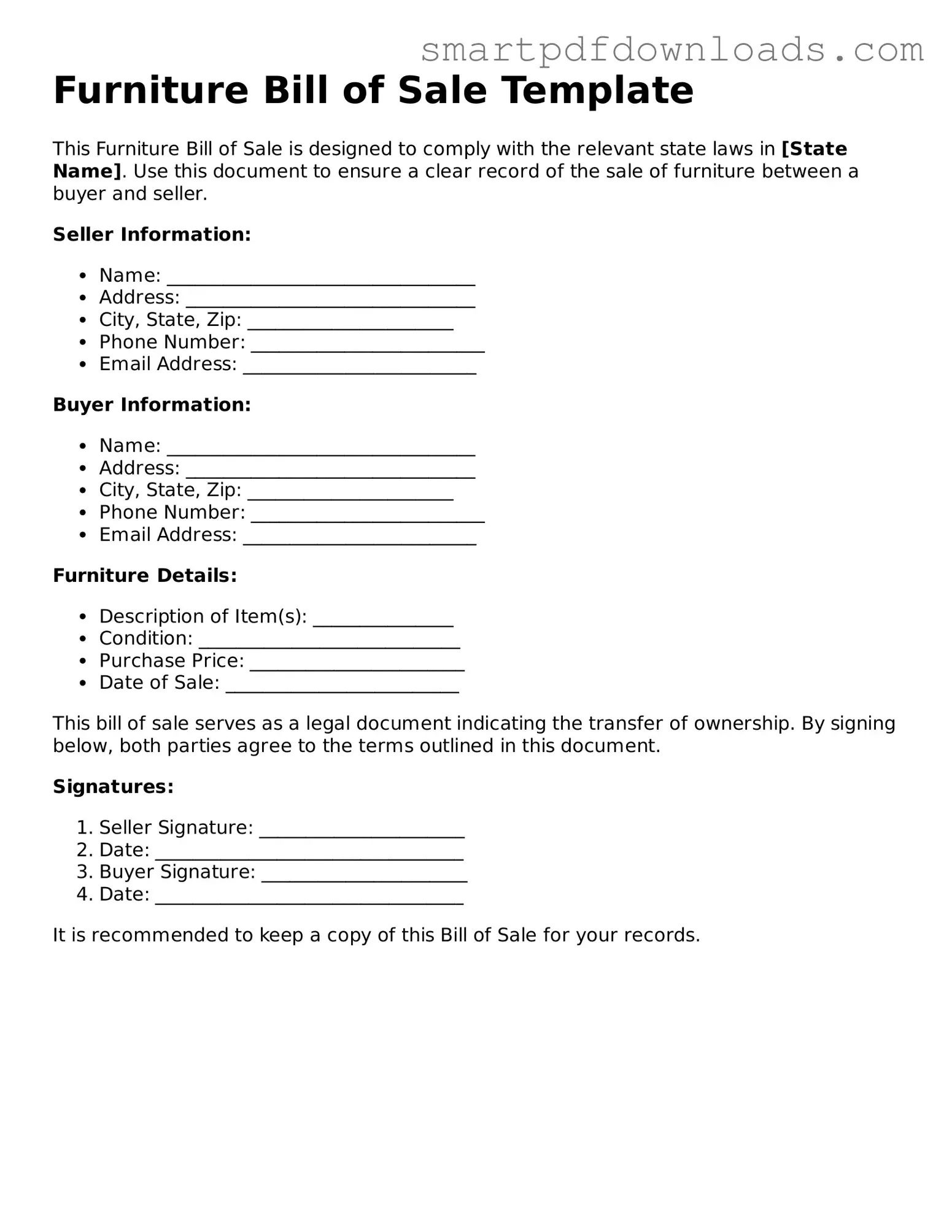Furniture Bill of Sale Template
This Furniture Bill of Sale is designed to comply with the relevant state laws in [State Name]. Use this document to ensure a clear record of the sale of furniture between a buyer and seller.
Seller Information:
- Name: _________________________________
- Address: _______________________________
- City, State, Zip: ______________________
- Phone Number: _________________________
- Email Address: _________________________
Buyer Information:
- Name: _________________________________
- Address: _______________________________
- City, State, Zip: ______________________
- Phone Number: _________________________
- Email Address: _________________________
Furniture Details:
- Description of Item(s): _______________
- Condition: ____________________________
- Purchase Price: _______________________
- Date of Sale: _________________________
This bill of sale serves as a legal document indicating the transfer of ownership. By signing below, both parties agree to the terms outlined in this document.
Signatures:
- Seller Signature: ______________________
- Date: _________________________________
- Buyer Signature: ______________________
- Date: _________________________________
It is recommended to keep a copy of this Bill of Sale for your records.
